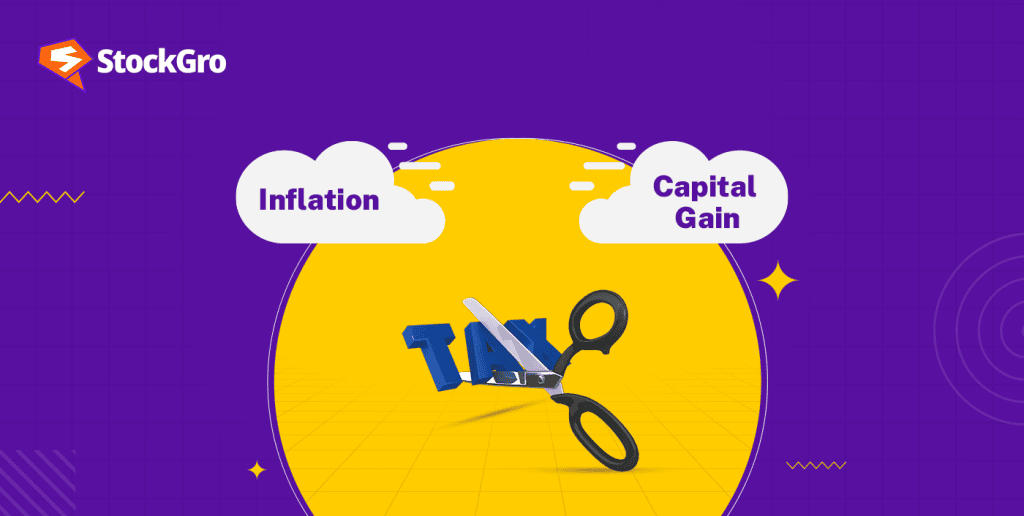
A general increase in the cost of commodities over time is called inflation. It has an adverse effect on savings and investments as it diminishes their real value.
Indexation enables investors to protect their returns from this adverse effect of inflation. Indexation is the practice of indexing (adjusting or inflating) an asset’s purchase cost over time in order to bring it up to the present values after accounting for inflation.
Indexation enables investors to calculate their profit or loss on investment based on the inflation adjusted purchase price of the asset and reduces tax liability on returns.
Also read: Inflation and deflation: The yin and yang of economics.
Indexation in mutual funds
Mutual funds are a very popular form of investment tool. Return from mutual fund investment does not fall outside the effect of inflation. Therefore, the process of indexation is tremendously helpful in protecting mutual fund returns from the effect of inflation.
For example- If return is 8% and inflation is 10%, the inflation will adversely impact the purchasing power of the return received.
When return is 10% and inflation is 6%. Although the mutual fund provided a 10% return, the real return after adjusting inflation is
10%-6%=4%.
Indexation in mutual funds depends on the type of return. Returns on mutual funds come under capital gains. They can either be long-term or short-term depending upon the duration for which they are held.
Also read: What are mutual funds?
Indexation and budget 2024
An investment has to qualify for indexation. Not every mutual fund investment can undergo indexation. The union budget of 2024 has laid out the recent updates for the same.
The indexation advantage for long-term capital gains stands dismissed as of July 23, 2024. It implies that individuals cannot change the cost price of their mutual fund units for inflation when computing returns for tax reasons. Indexation is not accessible for long-term profits from stocks or equity-focused mutual funds.
You may also like: Different types of inflation: How does it impact your finances?
Indexation method calculation
Capital gains are a rise in the market value of a mutual fund investment over a particular duration. If the NAV of a mutual fund was ₹20 a year ago and is now ₹25, the investment value has increased. It is known as capital gains. When the investment is redeemed a capital gain of ₹5 per unit will be realised.
The indexation method adjusts the purchase price (₹20) according to the prevailing inflation rate to find the real value of capital gain and reduce tax liability.
A Cost of Inflation Index (CII) helps to index the cost of acquiring mutual funds.
The Finance Ministry declares the Cost of Inflation Index number for each fiscal year. It can be found on the Income Tax Website.
Assuming that the transaction qualifies for indexation. Investors can evaluate the adjusted value of a mutual fund asset by following the two steps.
- The cost inflation index of the year in which the mutual fund unit is sold has to be divided by the cost inflation index of the year of its purchase.
- The resultant value is then multiplied by the actual cost of investment.
For example: P bought 6000 units of Debt Mutual Fund ABC at ₹20 in 2012-13 and sold them for ₹30 in 2018-19.
(Because the units were held for more than 36 months, this transaction is eligible for indexation benefits.)
The profit made from the deal is: 6000 (30-20) = Rs 60000.
(The Cost Inflation Index for 2018-19 is 280, whereas that for 2012-13 is 200. The statistics were collected from the Income Tax Site.)
First, we calculate the inflation adjusted purchasing price:
Purchase price adjusted for inflation: (280 / 200)*20 = ₹28.
Then, we compute the LTCG for the transaction:
6000*(₹30 – ₹28) = ₹12,000.
Thus, indexation reduced the tax burden. Since tax applicable on ₹60,000 will be more than that applicable on ₹12,000.
The value which is derived from the two steps below is the adjusted purchase price. Capital gain is calculated based on this adjusted purchase price.
Indexation benefits
There are many advantages to the indexation method. Some of them are as follows.
Tax: Indexation enables investors to pay tax on their real capital gain which is derived after making necessary adjustments for inflation. The principle of indexation enables investing in debt mutual funds a profitable prospect since it allows investors to receive relatively higher post-tax returns.
Prudent decision making: Inflation erodes an investor’s returns by giving a rosier picture of the financials of an investment. Indexation allows prudent investment decision-making by providing a true and fair view of an investment.
Conclusion
Indexation in mutual funds empowers individuals by enabling them to pay tax on their real return. The indexation benefits safeguard investor interest by protecting their assets against erosion due to inflation. Based on mutual funds. The indexation method is investor-centric and makes investment avenues lucrative to many individuals. However, indexation methods cannot be used in all asset classes. For instance, indexation cannot be performed in equity. Moreover, the 2024 budget has also made modifications to the indexation rule. It is necessary to remain informed with the present indexation rules to make prudent decisions.
Also read: What are inflation-indexed bonds?
FAQs
- Is indexation allowed in mutual funds?
Yes, indexation is allowed on mutual fund investments. However, it is important to note that indexation is not allowed on equity stock investments and equity-based mutual fund investments. Moreover, the policy of indentation differs for different asset classes. It is important to note the unique indentation guideline issued by the authorities of the asset in question.
- How to calculate capital gain on a mutual fund with indexation?
In order to calculate indexation in mutual funds, investors first need to divide the CII of the sale year by the CII of the purchase year. The resultant value must be multiplied by the purchase price of the mutual fund. This adjusted purchase price is then subtracted from the selling price to get the capital gain on mutual funds.
- What is the new rule for indexation?
As of July 23, 2024, the indexation advantage for long-term capital gains is no longer valid. This means that investors cannot adjust the cost price of mutual fund assets for inflation when calculating capital gains for tax purposes. Indexation does not allow for long-term earnings from equities or equity-focused mutual funds.
- What is indexation?
Indexation allows investors to safeguard their earnings from the negative impact of inflation. It is the process of indexing (adjusting or inflating) the purchase price over time to bring it up to current values after accounting for inflation. It is extremely effective in protecting mutual fund returns from the effects of inflation.
- What is CII?
The cost of inflation index allows investors to assess long-term capital gains from asset sales. The inflation rates used for indexation are based on the government cost inflation index (CII). The Central Government determines the value of the index each year, and it gets posted on the Income Tax Departmental website.

